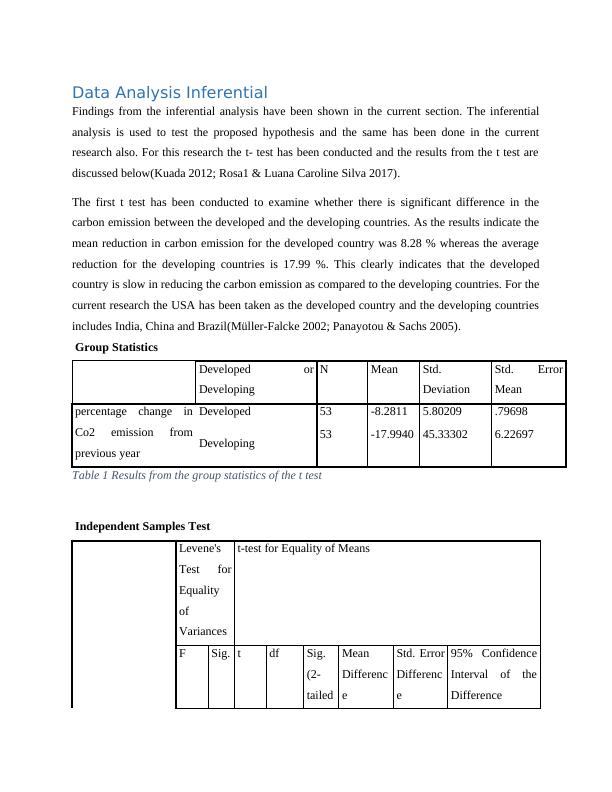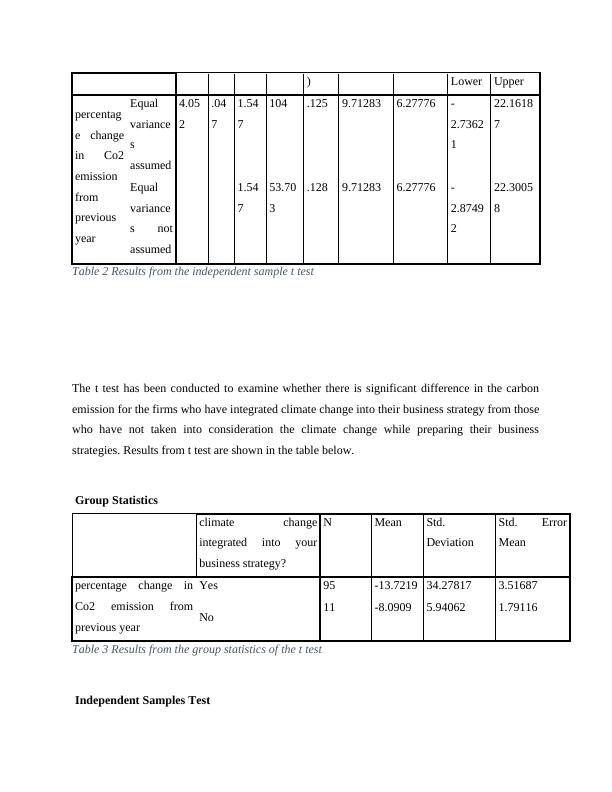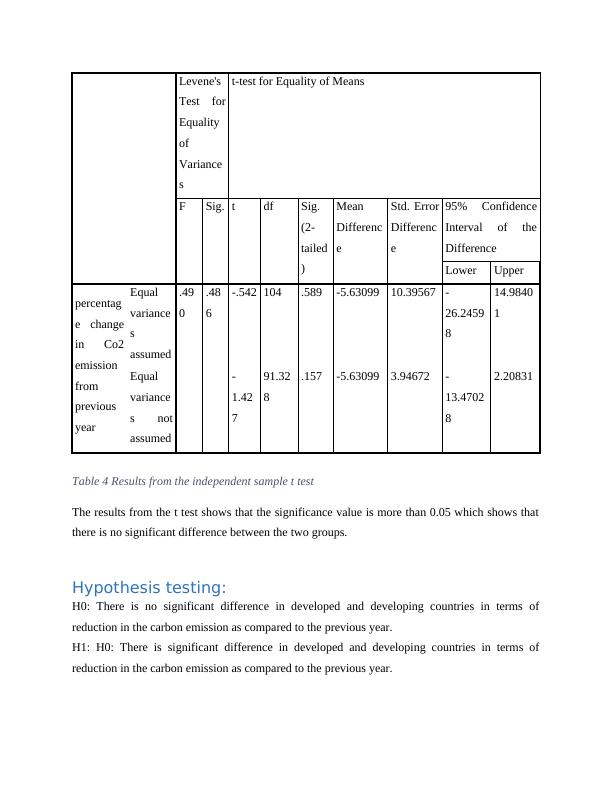Inferential Analysis on Carbon Emission Reduction in Developed and Developing Countries
Added on 2023-06-04
8 Pages2537 Words154 Views
End of preview
Want to access all the pages? Upload your documents or become a member.
Data Analysis and Hypothesis Testing for Carbon Emission and Climate Change Integration in Business Strategy
|15
|3225
|463
Statistics: Analysis of Employee Engagement and Workload at Indigo Insurance Company
|6
|1012
|370
Relationship between Team Engagement and Employee Engagement
|10
|1174
|85
Calculating t-tests for Independent and Paired Samples - Exercise 31 and 32
|9
|1866
|331
Desklib - Online Library for Study Material
|7
|597
|419
Addiction: Impact of Gender and Socio Economic Factors on Gambling, Alcohol, and Drug Consumption
|15
|2855
|75



